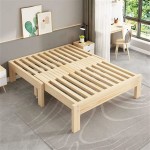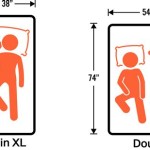What Should Baby Wear to Bed at 25 Degrees Without a Sleeping Bag?
When it comes to dressing your baby for sleep, finding the right balance between warmth and comfort is crucial. At 25 degrees, you'll want to create a cozy environment, but avoid overheating. This is particularly relevant when choosing clothes for your baby to sleep in, especially if you opt not to use a sleeping bag. Understanding the proper layering techniques and clothing choices can help ensure your baby sleeps soundly and safely.
Consider Your Baby's Age and Size
A key factor in determining what your baby wears to bed is their age. Newborns and young infants have a harder time regulating their body temperature than older babies and toddlers. This means they are more susceptible to overheating and chills. Therefore, you'll want to pay extra attention to their comfort and warmth. Additionally, the baby's size plays a role. A larger baby may require fewer layers than a smaller baby of the same age. Always consider the individual needs of your baby when making decisions about their clothing.
Choose Breathable Fabrics
Regardless of the temperature, it's always a good idea to dress your baby in breathable fabrics. Natural fibers like cotton are highly breathable and allow air to circulate, preventing your baby from feeling too hot or clammy. Avoid synthetic materials like polyester, which tend to trap heat and moisture and could increase the risk of overheating. Opt for soft, comfortable clothing that allows your baby to move freely in their sleep.
Prioritize Room Temperature
Before focusing on your baby's attire, remember that the ideal room temperature for sleeping babies is between 68-72 degrees Fahrenheit. If your home consistently remains around 25 degrees, you may want to consider using a space heater to achieve a more comfortable temperature. However, ensure you take all necessary precautions regarding space heater safety. Consider using a thermostat to maintain a consistent temperature throughout the night. This helps ensure a comfortable and safe sleep environment for your baby.
Layer Appropriately
Layering is a great way to adjust your baby's warmth without overdoing it. Start with a lightweight base layer like a long-sleeved onesie or pajamas made from cotton. You can then add a second layer, such as a thin cotton sleeper or a light cardigan. This allows you to easily adjust the layers throughout the night depending on your baby's temperature. Check your baby's chest and back to see if they are warm or sweaty. If they feel warm or damp, you can remove a layer. If they feel cool, you can add a layer back.
Avoid Loose Clothing
When it comes to sleepwear, loose clothing should be avoided. Loose clothing can pose a suffocation risk, especially for newborns and infants. Ensure any clothing you choose for your baby fits snugly but comfortably. Avoid clothing with drawstrings or loose embellishments that could pose a safety hazard. Always follow the manufacturer's recommendations for size and fit and consider doing a "pinch test" to ensure the garment fits snugly around the neck. If you feel any fabric bunching, it's best to size up.
Check for Signs of Overheating
While layering is a great way to adjust your baby's temperature, it's crucial to monitor them for signs of overheating. These signs may include excessive sweating, flushed cheeks, a fast heartbeat, or a hot feeling to the touch. If you notice any of these signs, remove a layer of clothing and ensure your baby is comfortable. Keep in mind that babies can become overheated very quickly, so it's important to stay vigilant.
Alternative Warmth Options
If you are hesitant about using a sleeping bag or feel your baby is not quite ready for one, there are other ways to provide extra warmth during sleep. Consider using a warm blanket, but ensure the blanket is lightweight and breathable. Never use heavy blankets or pillows, as these pose suffocation risks. Another option is a cotton sleep sack, which offers warmth without the risk of loose blankets. Always ensure any bedding or sleepwear is free from any potential hazards.
Consult Your Pediatrician
If you have any concerns about dressing your baby for bed, consult your pediatrician for advice. They can provide personalized guidance based on your baby's specific needs and medical history. They can also offer tips on how to create a safe and comfortable sleep environment for your baby, especially if you live in a climate with fluctuating temperatures.

What To Dress Baby In For Bed The Hot Weather Manchester Evening News

What Does Baby Wear To Bed In This Heat Mumsnet

Dressing Baby For Sleep Sleeperific Children S Consulting
Dressing Baby For The Night In These Temperatures Pas Forums What To Expect

Baby Sleep Temperature Guidelines Pampers

Jojo Maman Bébé Clothes Baby Kids Nursery
The Tog System Explained How To Dress Newborn Mokee

What Should Baby Wear To Bed This Winter

What Should Baby Wear To Sleep Tonight 24 Degrees Mumsnet

9 Best Kids Sleeping Bags For Camping Of 2024 Reviewed







